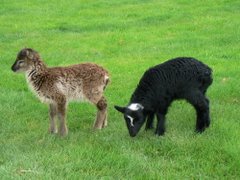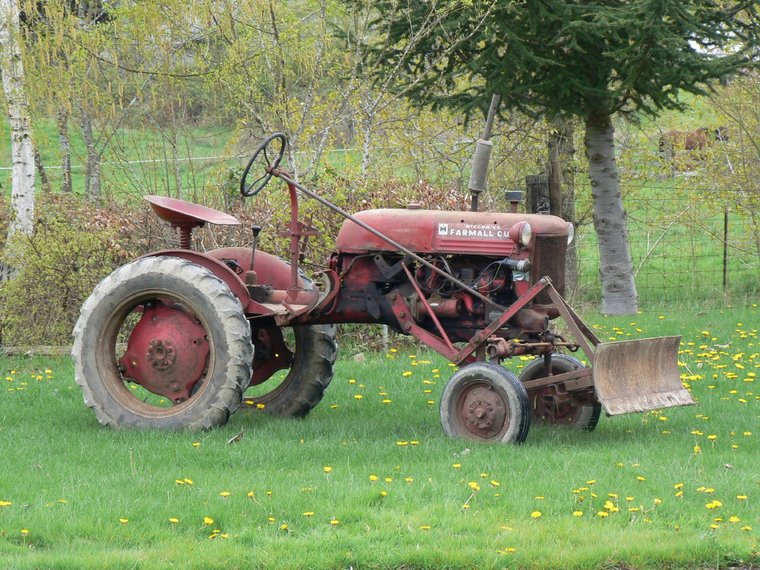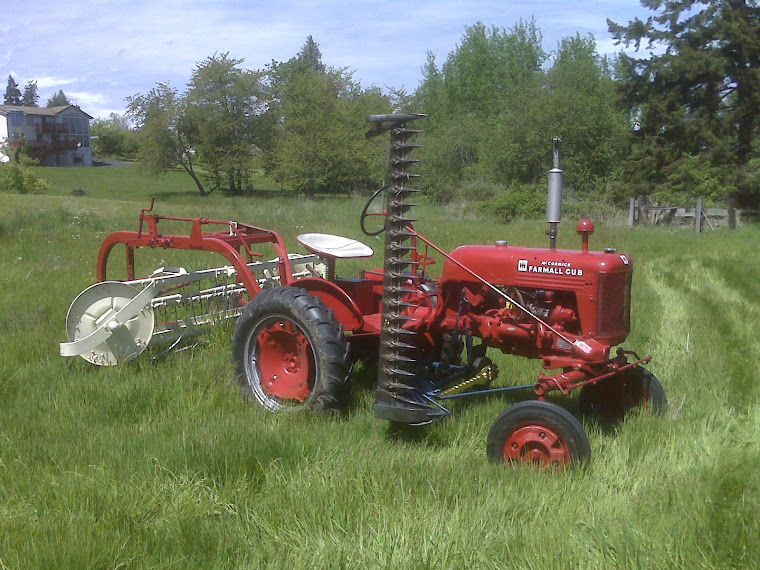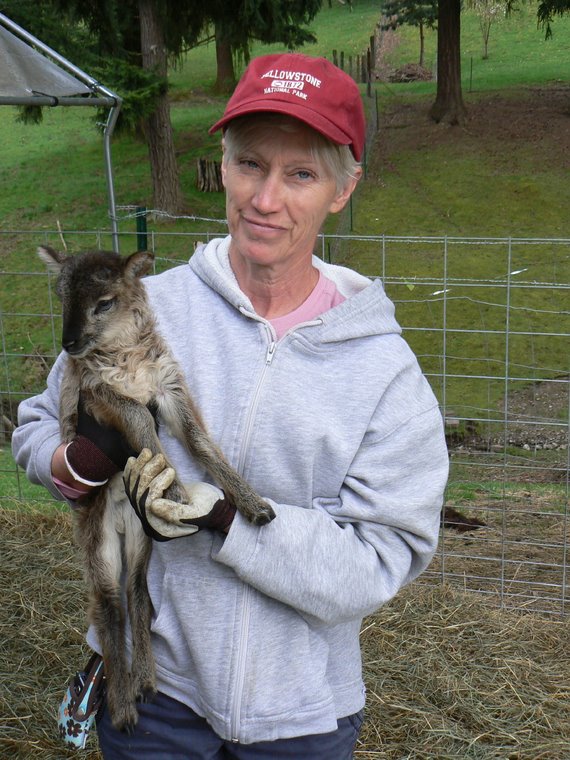Ever since obtaining my first Soay sheep I have been far more interested in the coat color genetics and the rare (because they are recessive genes) patterns. Consider the occurrance of frequencies of the discreet observable (phenotypic) coat patterns expressed in Soay sheep due to the 3 disinct coat color genes: Agouti (Wild or self pattern), Brown (dark or light phase), and Spotting (white spots or none).
(If you really want to read more about this, you can in this article I have posted: http://woodlandcreekfarm.com/coat_patterns.pdf )
With 3 independent coat color gene loci, and with only 2 mutually exclusive types at each of these, there are (2*2*2)= 8 possible phenotypes one can observe. To give the reader some idea of the relative numbers of these that likely exist in a Soay Sheep population unaltered by human selection, I have extracted various numbers from published studies of Soay on the island of Hirta and combined them to show typical likely relative frequencies. I intend to report these more fully in a technical article, but for now I will post the data here. (Click on image to enlarge it enough to read it).
 Note that by total count, for the most rare genotype (triple homozygous recessive - Aa/Aa, Bb/Bb, Ss/Ss, aka white-spotted light-self), there was only one such Soay found out of 1,835 total Soay counted on all of Hirta in 1966. Pretty darn rare. Even the pattern with only two of the recessive genes - self and white spotting, (that is, self-colored blacks with white spotting) showed only 4 individuals present in that same survey of 1,835 animals. The remainder of this blog will discuss our progress on that "line" of breeding.
Note that by total count, for the most rare genotype (triple homozygous recessive - Aa/Aa, Bb/Bb, Ss/Ss, aka white-spotted light-self), there was only one such Soay found out of 1,835 total Soay counted on all of Hirta in 1966. Pretty darn rare. Even the pattern with only two of the recessive genes - self and white spotting, (that is, self-colored blacks with white spotting) showed only 4 individuals present in that same survey of 1,835 animals. The remainder of this blog will discuss our progress on that "line" of breeding.
So my first "relatively rare" genotype was to get some self-colored black Soays. When I realized that some also showed white spotting on their heads, I began to seek increasing the extent of white spotting on the self-colored blacks, as this gave a very pleasing appearance. So this has been one of my longer-running breeding groups - the "black and whites" (B&W).
These will give you some idea of the progress I've made in 5 years. The first B&W ram I had only had a small white wisp on the top of his head.
He sired a ram lamb (Woodland Creek Pepper) when mated with a similarly marked ewe, with a nice white spot on his head, and a second (Woodland Creek Obsidian) with both a white head spot and forehead spot.
Chilcoot, mated with a B&W ewe, produced a ram lamb Woodland Creek Yosemite, that had a white head spot connected with a full white facial blaze. The white additionally extended to some white spots on the side of his neck.
Chilcoot also sired that year a B&W ewe lamb with additional white spotting extent, Woodland Creek Athena.
Woodland Creek Athena '09
In the next year, with a different B&W ewe, Chilcoot produced a B&W ram lamb (Woodland Creek Lakotah) with even more extensive white.
You can see how the extent of white spotting has been increased in each succeeding generation, going from a small white head spot, to a larger head spot, to a head and forehead spot, to a "shield" connecting the head and forehead spot, to a blaze, to a blaze with neck spots, to (with Lakotah above) now a full blaze nearly encircling the horns, including his nose, a full "necklace" and a white bib, and even some white on his ears.
So back to the B&W breeding group and this year's hopes for lambs. Lakotah was too immature to use for breeding last fall, so Yosemite was the sire for our B&W ewe group. We have seven B&W ewes in that group (although a couple are yearling ewes that may not have been mature enough to be bred).
You may be able to imagine the anticipation I have at what unexpected outcome we may get this year for our B&W lambs! Judging by swelling udders this could occur within days.
More about our other breeding groups in later blogs.





2 comments:
It will be exciting to see the results of your genetic work in the lambs this year! Might you include Cocoa in the white-spotting breedings or will you be keeping a separate line of light-phase? They are beautiful.
As far as I have been able to deduce, the two light-self Soays I have (Express and Cocoa) do not have white spotting in their lineage. That said, it is impossible to be sure that a recessive gene is NOT present. Some of my breeding stock for potential light-self DO have white spotting, so that would give me the trifecta - light/self/white... someday..
Post a Comment